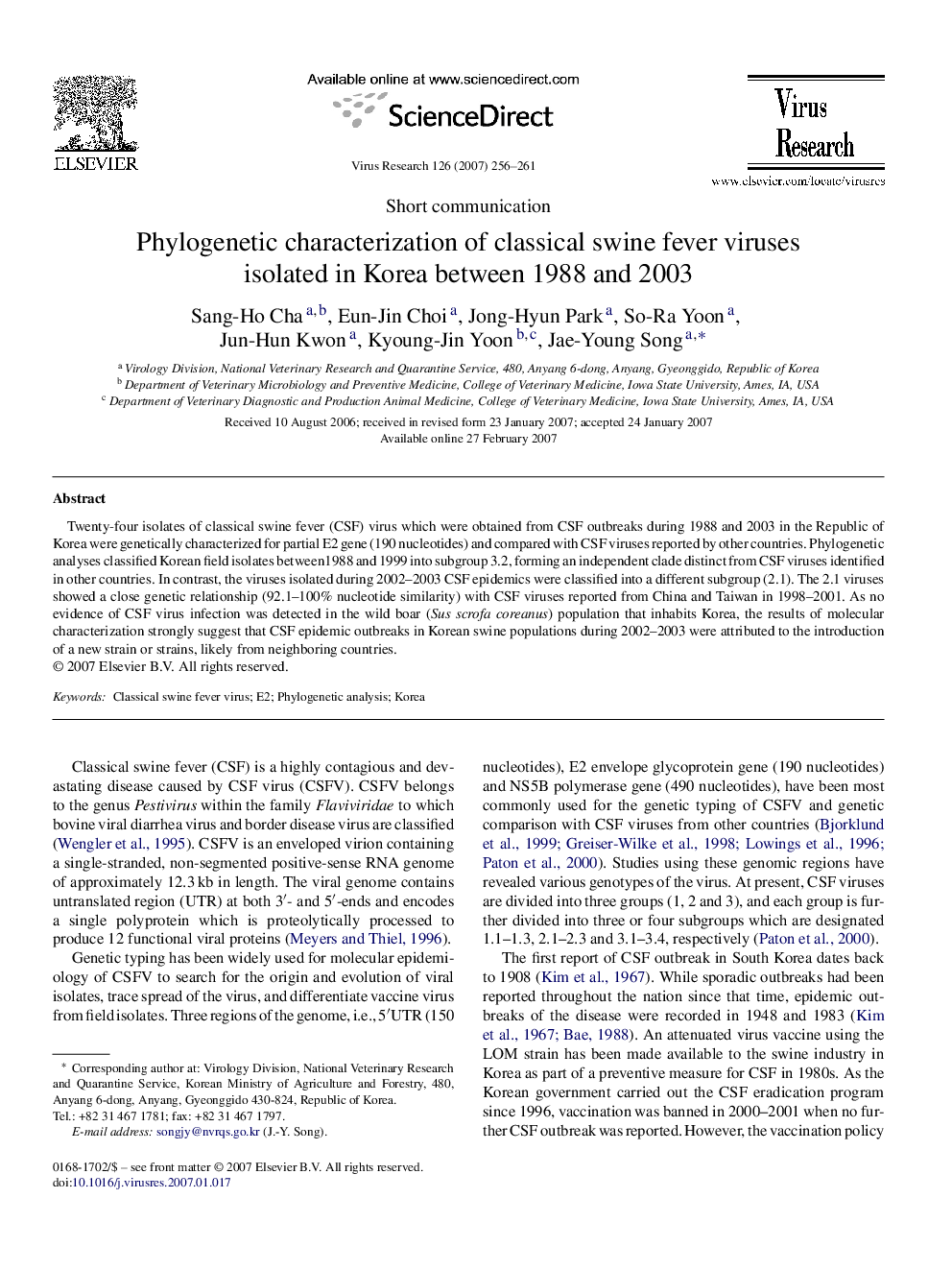| Article ID | Journal | Published Year | Pages | File Type |
|---|---|---|---|---|
| 3430917 | Virus Research | 2007 | 6 Pages |
Twenty-four isolates of classical swine fever (CSF) virus which were obtained from CSF outbreaks during 1988 and 2003 in the Republic of Korea were genetically characterized for partial E2 gene (190 nucleotides) and compared with CSF viruses reported by other countries. Phylogenetic analyses classified Korean field isolates between1988 and 1999 into subgroup 3.2, forming an independent clade distinct from CSF viruses identified in other countries. In contrast, the viruses isolated during 2002–2003 CSF epidemics were classified into a different subgroup (2.1). The 2.1 viruses showed a close genetic relationship (92.1–100% nucleotide similarity) with CSF viruses reported from China and Taiwan in 1998–2001. As no evidence of CSF virus infection was detected in the wild boar (Sus scrofa coreanus) population that inhabits Korea, the results of molecular characterization strongly suggest that CSF epidemic outbreaks in Korean swine populations during 2002–2003 were attributed to the introduction of a new strain or strains, likely from neighboring countries.
